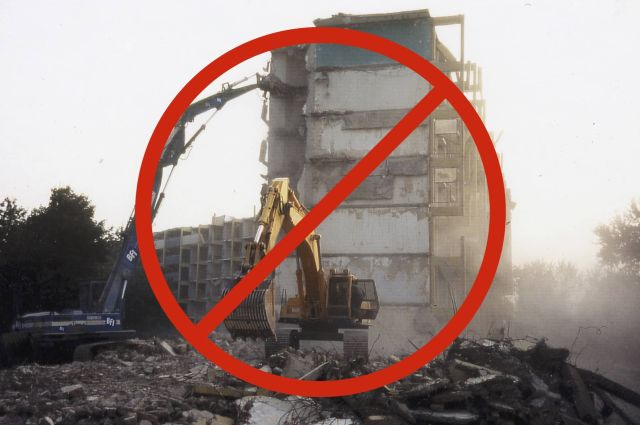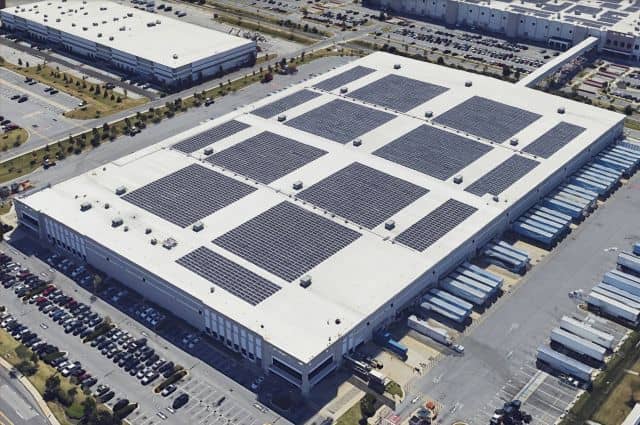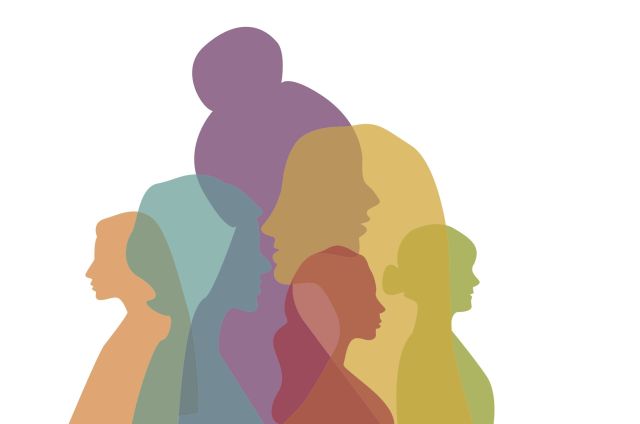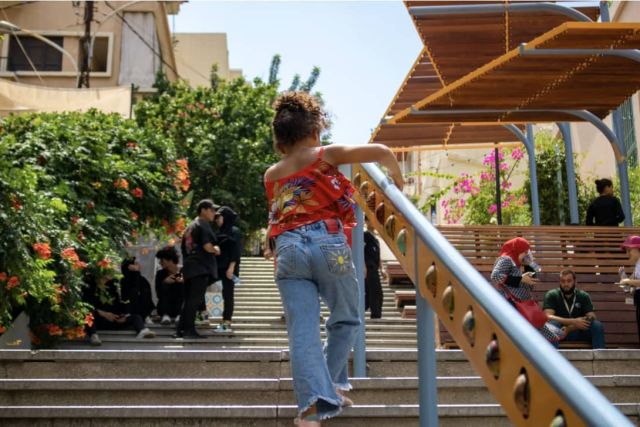Commentaries

Demolition has far-reaching consequences for people, nature and the climate. What can be done to slow its rate?
André
Thomsen (Delft University of Technology) comments on the
recent Buildings & Cities special issue ‘Understanding Demolition’ and explains why this phenomenon is only beginning to be understood more fully as a social and behavioural set of issues. Do we need an epidemiology of different demolition rates?

Why urban planning needs to become more diverse and inclusive.
Safaa Charafi asks: is it possible to decolonialise the planning profession to create more inclusive and egalitarian urban settings? It is widely accepted that cities are built by men for other men. This male domination in urban planning results in cities that often do not adequately address challenges encountered by women or ethnic and social minorities. Although efforts are being taken to include women in urban planning, women of colour are still under-represented in many countries, resulting in cities that often overlook their needs.

Governments need to provide a clear policy and strategy for low-carbon heating so implementation can gather momentum.
Engineer Chris Twinn (Twinn Sustainability Innovation and LETI member) argues that the urgency of decarbonisation means that UK (and other countries) must make clear decisions about a heating system strategy and its implementation. Prevaricating will make the transition slower and risk missing important climate commitments.

How can research assist architects & others to substantiate the intended social benefits in an architectural project?
Edward Ng (Chinese University of Hong Kong) provides an architect’s perspective on the Buildings & Cities special issue ‘Social Value of the Built Environment’.

Have civil society and governments ceded too much power and influence to a few tech corporations? Why analysis of the smart city needs to include private sector data.
Dillon Mahmoudi (University of Maryland, Baltimore County) and Alan Wiig (University of Florida) comment on the contributions of the Buildings & Cities special issue Data Politics in the Built Environment. This commentary considers how tech corporates such as Amazon are changing urban life and creating new forms of automated surveillance.

Why more just and democratic ways are needed for living in smart built environments.
Miguel Valdez (Open University) comments on the contributions of the Buildings & Cities special issue Data Politics in the Built Environment. This commentary considers an additional perspective and provides an additional foundation to support more progressive data politics in the built environment. The three Aristotelian virtues of ‘techne’, ‘episteme’ and ‘phronesis’ and epistemic justice provide suitable lenses to critique smart city politics.

Both technical advancements AND human- and nature-centred solutions of culture & heritage are needed.
Lori Ferriss (Architecture 2030) reflects on her attendance at COP28. Although COP28 included many wins for the built environment, it also marked a moment of missed opportunity to include valuable indigenous and heritage knowledge and culture-based climate solutions in the built environment agenda. Recommendations are made for improving policy pathways and the role of research.

Will space heating use hydrogen or electric heat pumps? The solution may not be that simple.
Jon Saltmarsh (Energy Systems Catapult; previously at UK Department for Energy Security and Net Zero) reflects on the polarised debate around how best to decarbonise homes in the UK. Lessons from the UK may have resonance for other nations in their own journey towards low carbon heating in homes.

The rationale and implications of ensuring adequate daylight provision are considered for designing cities and buildings.
The World Health Organization lists universal access to clean air, clean water, nutritious food and safe shelter as key components of public health, Lisa Heschong (author, architectural researcher & a fellow of the Illuminating Engineering Society), argues that access to ample daylight, both outdoors and indoors, should be added to that list. Evidence from many different scientific fields1 reveal that humans live healthier, happier, more productive lives with daily exposure to the natural patterns of sunlight.

Important lessons for keeping cool in summer can be adapted from cities with hot climates
Samantha Organ (University of the West of England), Stephanie Organ (science communicator) and Quentin Deronzier (NTN Europe) respond to the Buildings & Cities special issue ‘Alternatives to Air Conditioning: Policies, Design, Technologies, Behaviours’ by considering how vernacular architecture and modern technology could provide solutions for the increasingly severe problem of summer overheating in European cities.

Can vernacular design features make Nigerian housing more sustainable?
Cordelia Osasona (Obafemi Awolowo University) considers whether and how traditional architecture can be harnessed and combined with modern approaches in southwestern Nigeria to improve environmental, cultural and technological sustainability.

Why urban spaces need to be reimagined from an intersectional perspective, incorporating the voices and experiences of women
Cities are hubs of economic activity and cultural vibrancy, however, urban growth policies and city governance that fail to consider gender and poverty have exacerbated socio-economic disparities, exclusion, and segregation. Nourhan Bassan (GamingX) discusses some of key themes from her forthcoming book “The Gendered City”. She argues that it is imperative to understand the historical context of urban design, to critically examine gender disparities in cities, and to advocate for women's rights in shaping and accessing urban spaces.

by Matti Kuittinen (Aalto University & the Nordic authority group working for climate declarations for buildings 2020–2023)
For mitigating the built environment's large carbon footprint, regulation within the next 10 years is needed in all countries. The Nordic countries have been co-developing climate policies for buildings since 2018 and are already seeing the positive outcomes from joint efforts. COP28 can apply these principles and lessons elsewhere. To prevent duplication of effort in each country, international collaboration with climatically and culturally similar countries can be beneficial.

By Alexander Passer, Thomas Lützkendorf, Rolf Frischknecht (representing IEA EBC Annex 89)
The built environment contributes 40% of anthropogenic greenhouse gas emissions, is massively affected by the consequences of climate change and can itself be part of the solution. It is a cause, a victim and a solution at the same time and therefore urgently requires actions by COP28 and national governments. A specific GHG budget for national building stocks including a clearly defined reduction pathway towards net zero GHG emissions is needed, in parallel with a legal binding requirement to limit GHG emissions in the life cycle of individual buildings.

By Rihab Khalid (University of Cambridge)
COP28 must create transformative change to ensure gender equality and align with the framework of the UN’s Sustainable Development Goals (SDGs). Gender equality, a cornerstone of this agenda, holds a critical lens to examine and address the intersecting crises of climate change and social inequity. Climate change has differential impacts on men and women, with the latter often bearing the disproportionate burden of climate-related impacts and vulnerabilities. Although women play a critical and transformative role in both climate adaptation and mitigation, they continue to face substantial challenges and disparities in terms of sustainable development.

Specialist toolkits can help the built environment professions to design urban spaces with gender equality
In the past, planning and design decisions have resulted
in creating places that make the lives of women harder than men. Karen Horwood and
Charlotte Morphet (Leeds
Beckett University) discuss the use of toolkits that address gender equality in
town planning. They propose that toolkits
could help to achieve change and inclusivity in processes across all the built
environment professions.

Cities are beginning to address gender inequality and successful examples show what can be achieved
Jua Cilliers (University of Technology Sydney & the Commonwealth Association of Planners) explores how addressing gender disparities can create cities that are inclusive, safe and functional for all their inhabitants. Gender inequity intersects with access, mobility, safety, health, climate resilience and security of tenure. Women and other marginalized gender groups face barriers in accessing public services, navigating through cities and staying safe.

Is managed retreat or abandonment an appropriate alternative if investment in building resilience is no longer possible?
When thinking about the future of our cities in the context of the ongoing climate crisis, what insights arise from the collapse and abandonment of pre-modern cities? Dan Penny (University of Sydney) considers what lessons these historical events have for modern societies, for our policies and planning.

Why lessons from vernacular buildings need to be rediscovered and transferred into better practice.
Robyn Pender (Whethergauge Ltd) argues that to reduce our dependence on energy to deliver resilient, comfortable and healthy buildings, we must recover vernacular knowledge of ‘pre-carbon’ buildings, i.e. buildings that existed before widespread fossil fuel exploitation.

Involving women in urban development processes and decisions will make cities better for everyone.
Elin Andersdotter Fabre (UN Habitat) and Tove Levonen (Shared City Foundation) explain why cities need to be more inclusive for women. The UN Habitat ‘Her City’ project provides a participatory toolkit and process to include women in urban planning, design and development.
Latest Peer-Reviewed Journal Content
Evaluating mitigation strategies for building stocks against absolute climate targets
L Hvid Horup, P K Ohms, M Hauschild, S R B Gummidi, A Q Secher, C Thuesen, M Ryberg
Equity and justice in urban coastal adaptation planning: new evaluation framework
T Okamoto & A Doyon
Normative future visioning: a critical pedagogy for transformative adaptation
T Comelli, M Pelling, M Hope, J Ensor, M E Filippi, E Y Menteşe & J McCloskey
Suburban climate adaptation governance: assumptions and imaginaries affecting peripheral municipalities
L Cerrada Morato
Urban shrinkage as a catalyst for transformative adaptation
L Mabon, M Sato & N Mabon
Maintaining a city against nature: climate adaptation in Beira
J Schubert
Ventilation regulations and occupant practices: undetectable pollution and invisible extraction
J Few, M Shipworth & C Elwell
Nature for resilience reconfigured: global- to-local translation of frames in Africa
K Rochell, H Bulkeley & H Runhaar
How hegemonic discourses of sustainability influence urban climate action
V Castán Broto, L Westman & P Huang
Fabric first: is it still the right approach?
N Eyre, T Fawcett, M Topouzi, G Killip, T Oreszczyn, K Jenkinson & J Rosenow
Gender and the heat pump transition
J Crawley, F Wade & M de Wilde
Social value of the built environment [editorial]
F Samuel & K Watson
Understanding demolition [editorial]
S Huuhka
Data politics in the built environment [editorial]
A Karvonen & T Hargreaves
European building passports: developments, challenges and future roles
M Buchholz & T Lützkendorf
Decision-support for selecting demolition waste management strategies
M van den Berg, L Hulsbeek & H Voordijk
Assessing social value in housing design: contributions of the capability approach
J-C Dissart & L Ricaurte
Electricity consumption in commercial buildings during Covid-19
G P Duggan, P Bauleo, M Authier, P A Aloise-Young, J Care & D Zimmerle
Disruptive data: historicising the platformisation of Dublin’s taxi industry
J White & S Larsson
Impact of 2050 tree shading strategies on building cooling demands
A Czekajlo, J Alva, J Szeto, C Girling & R Kellett
Social values and social infrastructures: a multi-perspective approach to place
A Legeby & C Pech
Resilience of racialized segregation is an ecological factor: Baltimore case study
S T A Pickett, J M Grove, C G Boone & G L Buckley

Latest Commentaries
Time to Question Demolition!
André Thomsen (Delft University of Technology) comments on the recent Buildings & Cities special issue ‘Understanding Demolition’ and explains why this phenomenon is only beginning to be understood more fully as a social and behavioural set of issues. Do we need an epidemiology of different demolition rates?
Where are Women of Colour in Urban Planning?
Safaa Charafi asks: is it possible to decolonialise the planning profession to create more inclusive and egalitarian urban settings? It is widely accepted that cities are built by men for other men. This male domination in urban planning results in cities that often do not adequately address challenges encountered by women or ethnic and social minorities. Although efforts are being taken to include women in urban planning, women of colour are still under-represented in many countries, resulting in cities that often overlook their needs.